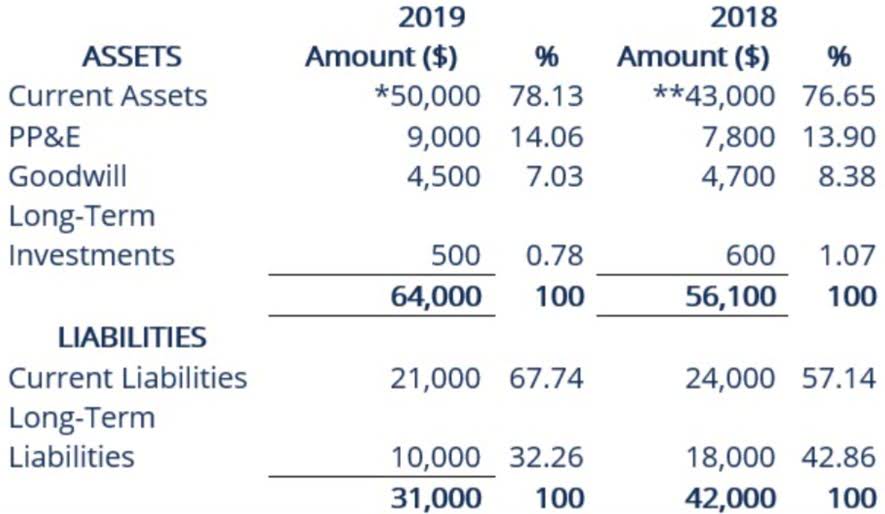
It is important to note the key differences between these two financial statements to help you efficiently gauge the health of your company. With a balance sheet in hand, you can find information about how much money the business has spent, and how much debt the company owes. Investors and business owners can use it to compare the current assets to current liabilities to gauge the company’s ability to meet its financial obligations. The core purpose of a balance sheet is to provide a summary of or insight into your company’s financial position to investors, creditors, and other interested parties at any given time. Investors and creditors analyze the balance sheet to check the business’s overall financial health.
It’s worth noting that examining the financials of any company works best when comparing over multiple periods and against other companies within the same industry. To calculate the company’s assets, you add the company’s liabilities and its equity. The asset must at all points be equal to the sum of the company’s liabilities and its equity on the balance sheet. Creditors and lenders also use both the balance sheet and income sheet, albeit for different reasons. They use the balance sheet to check if the company has an over-leveraged financial position.
Difference between balance sheet and income statement
By going back and looking at trends in your income statements, you can track your financial health, and find ways to improve your profit margin or increase cash flow. These include current ratio, debt-to-equity ratio and return on equity (ROE). An income statement allows analysts to calculate performance-based ratios.

Also known as a profit and loss (P&L) statement, an income statement summarizes a company’s financial performance over a specific period of time. It displays revenues, the cost of goods sold, and the net profit attributable to shareholders. The balance sheet and income statements complement one another in painting a clear picture of a company’s financial position and prospects, so they have similarities. Business owners, investors, creditors, and accountants use the income statement to gauge the company’s financial health.
What comes first: income statement or balance sheet?
Let’s look at a balance sheet example to understand what is included and pinpoint some of the differences between an income statement and a balance sheet. They can provide insight into the value of a business and its profitability to help the business forecast and plan for the future, avoid financial distress, and improve operations. However, a lender might prefer to view the balance what goes on balance sheet vs income statement sheet, which it can use to derive the liquidity of a loan applicant. Consequently, it can help managers identify problems reducing profits and opportunities for increasing profits. It shows lenders whether a company is generating enough profit to service debts. Investors see healthy profits as a sign of a well-run company competing effectively and likely to increase in value.
- It keeps track of profitability, income sources, expenses and budgets, allowing the company to take action against variances from projections.
- On the balance sheet, taxes can appear as deferred income tax liabilities or income tax payable in the liabilities section.
- Both documents can be very useful for your in-house financial management practices, and both will be scrutinized by accountants, investors, and partners.
- The balance sheet is a powerful analytical tool for investors and creditors, but it doesn’t provide a full understanding of your company’s value.
- Income statements and balance sheets are two essential tools in the entrepreneurs arsenal for keeping tabs on their revenue, expenses and cash flow.
The income statement details your total revenues and expenses over a longer period to show you how the company is performing overall. The balance sheet shows your company’s assets, liabilities, and equity – basically the financial health of the business at a specific point in time. It helps you figure out if you have enough money to cover your expenses and other financial obligations. For instance, if you apply for a business loan, you typically have to submit financial statements including a balance sheet and income statement.
Summary Comparison of the Three Financial Statements
The existence of a fiduciary duty does not prevent the rise of potential conflicts of interest. SmartAsset Advisors, LLC (“SmartAsset”), a wholly owned subsidiary of Financial Insight Technology, is registered with the U.S. The accountants track expenses related directly to game development, plus other expenses they need to keep their business running. Revenue, including non-operating income, is $842,000 ($834,000 net sales + $5,000 interest income + $3,000 other income).
Balance sheets can also identify other trends, such as how the receivables cycle works, how net profits are being used, and how often equipment is replaced. As you can see, analyzing the statements together provides deeper insight into financial health and performance. A cash flow statement also displays cash outflows for business activities and investments. By subtracting all your expenses from your revenues, you get your net income (also known as the bottom line.) This is the money you keep as profit.
